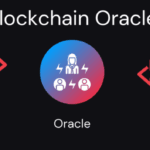In this article i will discuss the Ethereum Staking: Compounding vs Direct Rewards , rewarding strategies and what each helps you grow ETH.
Learn immediate payout revenue streams, rewards and payout reinvest, direct vs compound. Hurdling through these strategies will allow you to determine the most optimal method for accruing ETH payouts while maximizing your impact in sustaining the Ethereum network.
What is Ethereum Staking?
Ethereum staking refers to the act of locking in one’s ETH to help in the validation and securing of transactions in the Ethereum’s Proof-of-Stake network. In return for their ETH, stakers earn rewards which are proportional to the amount of ETH staked.

This process is far better than mining which is computationally expensive nd bulky, making Ethereum much more efficient and more environmentally friendly. Staking can be performed either individually or through staking pools, enabling holders of smaller amounts to also participate. This helps the network in ensuring higher levels of security and stability while earning passive income in the process.
Understanding Compounding Rewards
Ethereum staking compounding rewards means reinvesting the rewards earned back into the staked ETH balance which appreciates over time. This approach puts the mechanism of compound interest into effect. In other words, future rewards are computed on a larger base and not only the principal amount staked.

Although account holders may not benefit from compounding in the short term as much as in the case of “direct rewards,” it sures compounding provides the maximum payout in the longer term. Compounding rewards is, therefore best fitted for holders with a positive attitude to ETH for the longer tenor, and are willing to increase their ETH stash over a period of time.
Understanding Direct Rewards
The direct rewards an staker receives are paid out without reinvesting into the staked ETH. Stakers are paid a fixed percentage of what they bed and staked. This form of payment — direct rewards — seems easier because a staker will have access to their ETH staked freely and withdrawn staked ETH easily.

This approach does focus on short term liquidity rather than staked ETH long term growth. Compounded, reinvesting staked ETH would long term be more beneficial. Though direct rewards lacks the ability to grow staked ETH, compounding staked ETH reinvested, it pays out regularly, making it the perfect option for an investor with ETH that does not mind the staker losing liquidity flexibility.
Direct Rewards vs Compounding: Key Differences
| Feature | Direct Rewards | Compounding Rewards |
|---|---|---|
| Earnings Access | Immediate withdrawal and use | Reinvested automatically to grow stake |
| Growth Potential | Slower long-term growth | Higher long-term growth due to compounding |
| Flexibility | High, rewards can be spent anytime | Lower, rewards are locked back into staking |
| Complexity | Simple and easy to manage | Requires monitoring and reinvestment strategy |
| Best For | Short-term income or liquidity needs | Long-term investors seeking maximum ETH growth |
| Risk Factor | Lower, since funds are accessible | Slightly higher, as funds stay locked for compounding |
Factors to Consider Before Choosing a Strategy
Before deciding how to distribute rewards and Ethereum staking, here are primary aspects to keep in mind.
Investment Horizon: In terms of investment horizon, long-term investors are better off in relation to compounding rewards as short-term investors might prefer direct rewards.
ETH Price Volatility: Changes in the market can affect the market value of rewards, and direct rewards allow for more flexibility to respond to market changes.
Personal Goals: Identify whether your goals are set for passive income or long-term value maximization.
Platform Fees & Restrictions: Fees, minimum withdrawal restrictions, and other limitations on strategy optimization can impact overall strategy effectiveness.
Liquidity Needs: Direct rewards enable immediate access to ETH, compounding, however, grows the money but funds are not accessible.
Risk Tolerance: Direct rewards are less riskier than compounding, but in the case of compounding, the risk is slightly more due to the reinvesting of the funds.
Tips to Maximize ETH Earnings
Pick the Right Staking Provider: Evaluate the staking providers according to their fee structure, trustworthiness, and APY to maximize gains.
Frame Compounding Reward Strategies: Compounding can have positive effects on your staking rewards when reinvested.
Expand Staking Activities: Engage on several pools or various platforms to mitigate exposure on any single provider.
Assessment of Market Dynamics: Change the nets based on the movement of ETH prices and the changes in the network.
Adopt a Horizon Driven Approach: Establish long-term goals and restrain from consistent withdrawals as they will cut down on compounding benefits.
Increase Market Awareness: Ensure Ethereum news as well as staking rewards are easy to witness to help in proactive strategy formation.
Risk & considerations
Market Risk: The ETH staked rewards can become volatile due to changes in the ETH value.
Liquidity Risk: Immediate situations that are emergent can render a staked reward inaccessible.
Association Risk: The staked ETH reward can be exposed to service outages, staked ETH withdrawal fees, and limited security.
Cost Dilution: Waiting in the long run in order to avail yourself of direct rewards does not seem prudent.
System Risk: You can lose net rewards when the Ethereum protocol changes along with reward downgrades.
Payoff Additional Complexity: The need to monitor and reinvest the rewards in order to maximize gains increase the compounding rewards need complexity.
Pros & Cons
Pros & Cons Direct Rewards:
Pros:
- Access to rewards instantly earned
- High flexibility for utilizes, spending, or reinvesting
- Simple and straightforward
Cons:
- Growth lagging over a long period
- Loss on the opportunity of earning compounded returns on the investment
- Not suited for wealth-building over the long-term
Pros & Cons Compounding Rewards:
Pros:
- Growth potential over a long period is significant
- Maximizes ETH over a period of time
- Benefits from the power of compound interest
Cons:
- Rewards are locked which diminishes liquidity
- More difficult to manage
- Funds are delayed for immediate use
Conclusion
To sum up the discussion, whether you prefer compounding interest or receiving direct rewards during Ethereum staking is entirely up to your investment objectives as well as your time horizon. For those looking for instant liquidity, direct rewards are more beneficial, as they are convenient and more versatile.
Unlike direct rewards, which are paid instantaneously, compounding rewards accrued over time are paid out to maximize ETH growth by reinvesting and appreciating compound interest. After finishing the assessment, if you categorize the right Ethereum riscos, the staking platform’s alternatives and your investment objectives and risk appetite, you will come up with the right choice strategy that will enable you to maximize the rewards during the Ethereum network’s downtime.
FAQ
What is the difference between compounding and direct rewards in Ethereum staking?
Direct rewards are paid out immediately and can be used freely, while compounding reinvests your rewards to increase your staked ETH, maximizing long-term growth.
Which strategy earns more ETH over time?
Compounding rewards generally earn more over the long term because reinvested rewards generate additional earnings through compound interest.
Can I switch between compounding and direct rewards?
Many staking platforms allow you to switch strategies, but terms and withdrawal rules may vary, so check platform guidelines.








